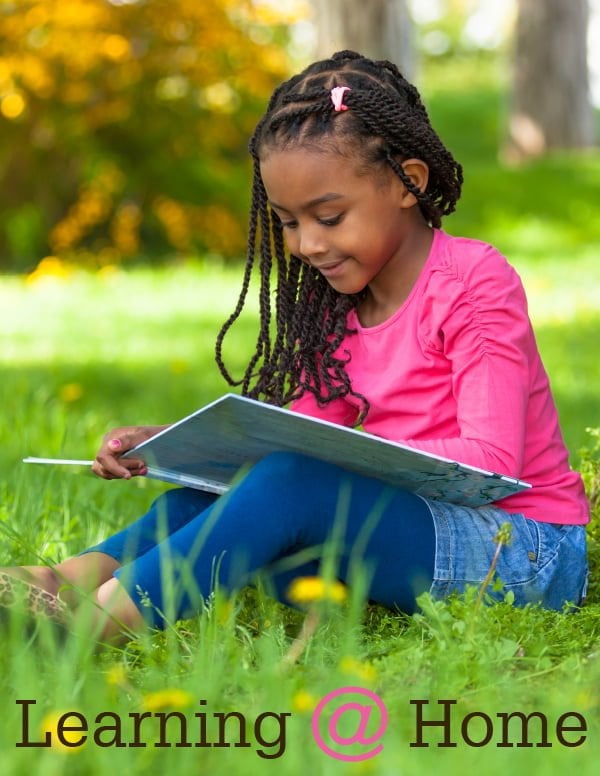The Top 10 Benefits of Homeschooling Your Child
Our homes are powerful places for living and learning. As we move through the daily and weekly rhythms of learning at home, we discover a panoply of learning moments for our young children. These homeschooling moments are not tied to a curriculum, not focused on standards or expectations. They happen naturally, organically, as our children follow their innate instincts to explore the important tools of their culture with curiosity and enthusiasm. Truly, the benefits of homeschooling your child are vast, so why not at least entertain the idea?
The Benefits of Homeschooling
Boston College psychology professor, Dr. Peter Gray, writes in his book, Free To Learn: “Children are biologically predisposed to take charge of their own education.
When they are provided with the freedom and means to pursue their own interests, in safe settings, they bloom and develop along diverse and unpredictable paths, and they acquire the skills and confidence required to meet life’s challenges.”[1]
Whether your children are still toddlers and preschoolers, or if you have decided to homeschool, there are many ways that you can create at home the conditions that ignite natural learning. By reimagining the ordinary spaces of our homes as extraordinary resources for early childhood learning, we can foster a home learning environment that sparks curiosity, engages children naturally in discovery of their world, and cultivates a more peaceful home life.
Here are the top 10 benefits of homeschooling plus plenty of ideas for re-envisioning your home as a powerful place for natural learning.
Freedom
You are a facilitator of freedom, a protector of the conditions of natural childhood learning. You simply listen, and watch, and then you help to gather or find resources that help your child to learn naturally as he is innately designed to do. You bridge the gap between your child’s nascent interests and ideas and the vast world around him. The benefits of homeschooling include knowing that you and your child are free to learn as you naturally do.
As pioneering early childhood educator, John Holt, wrote in his classic book, Teach Your Own: “What children need is not new and better curricula but access to more and more of the real world; plenty of time and space to think over their experiences, and to use fantasy and play to make meaning out of them; and advice, road maps, guidebooks, to make it easier for them to get where they want to go (not where we think they ought to go), and to find out what they want to find out.”[2]
Related: Is Homeschooling Right for Your Family?
As a parent, you protect this freedom—the time and space for natural learning—and connect your child’s burgeoning passions with the abundant resources of your community.
Play
The deepest learning, especially for children, comes when they are doing something they enjoy, in the spirit of play. And when this play is unstructured and child-led, the learning that results is richer and more meaningful.
Recent research by a team of psychologists at the University of Colorado reveals the benefits of play-based learning. In their study, the researchers found that the more opportunity children had for free, unstructured, unsupervised play time–as opposed to organized play like sports and classes—the higher their “Executive Functioning” skills were.
The children who were given more time for free play were better equipped to establish their own goals, be more self-directed, more organized, and more self-regulating than children engaged in more structured, supervised activities.[3]
Give your children the freedom to play. Make unstructured play time the priority over classes and lessons. Remember that one the best benefits of homeschooling is that you can let your child lead and be the director of her play while you hold the space for this deep learning to occur.
Warmth
Natural learning comes easily from a warm and inviting space. Keep natural toys and materials, de-clutter, and incorporate homemade items into play-spaces to create an enriching learning environment.
Consider donating (or rotating) half of your child’s current toys to simplify and calm their space. The fewer the toys, the more deeply they will play with those that are left.
For your remaining toys, select high-quality, non-commercial toys made from natural materials like wood and wool. These natural toys trigger a child’s imagination in ways that manufactured plastic cannot.
And think creatively about special “toys” for young children. Playing with a ball of yarn or a basket of clothespins, while a grown-up watches nearby, can be great fun for babies and toddlers. Fill your play-spaces with warmth by showcasing the homemade. Drape a piece of string or yarn across a window or wall and clip your child’s artwork to it. Frame your child’s art for all to admire. Sprinkle handmade items into your play-spaces, with a homemade pillows or a knitted blanket, adding warmth and inspiration to your home.
Curiosity
Spark your child’s natural curiosity with baskets of books scattered throughout your home. Gather “coffee table books,” and other large, colorful books to include in your play-spaces for children to explore. Make tools for child-directed learning readily available and accessible, like wooden blocks and letters, puzzles, microscopes and magnifying glasses, dress-up clothes and play silks. Set up a book nook or a nature corner or a music alcove.
Envision your home as an incubator of curiosity and imagination, with nooks and crannies offering enjoyable spaces for learning and discovery.
Creativity
Think of ways to cultivate creativity in your home. Prepare a morning art table for your toddler or preschooler to stumble upon. Fill it with paper and crayons, tape and glue, magazines to cut up, or different materials to explore.
For older children, designate a space in your home as your constant “creativity corner,” with art supplies ready and waiting when inspiration hits. Filling our homes with creative spaces for our children help them to direct their own learning, reveal their own interests, and pursue their own passions without waiting for grown-ups to lead the way.
Rhythm
When we think of simple ways to integrate our children into the daily rhythms of home–involving them in household projects, inviting them to move through the day alongside us–we find that our days at home can be more peaceful, more enjoyable, and more productive than we ever thought possible.
By re-envisioning our home and the daily tasks we complete within it as important to our child’s early learning and development, we begin to see that our role is not to entertain our children, not to occupy them, but to welcome them into the daily rhythms of our life and work. Yes, it will take longer—perhaps much longer—to fold that pile of clothes or bake those cookies, but when we see our home-based activities—like cleaning and cooking—as central to our child’s learning, then it doesn’t matter if it takes longer than it otherwise would. It’s not something to get through quickly so you can play with the train set on the floor. Instead, it is the learning activity for that time of the day, for that moment, and it is deeply worthwhile.
Nourishment
Just as folding the laundry can become a learning activity in and of itself for young children–an exercise in sorting and organizing, identifying shapes and colors in a natural way as part of the ordinary cadence of the day—so too can cooking and baking.
Instead of feeling the need to buy play-dough, for instance, and find a set time for using it with your toddler or preschooler, instead make basic pizza dough for dinner. Mix some flour, water, yeast, and oil following a basic pizza dough recipe, and then let your child play with it, roll it, knead it, squish it, while you move on to sautéing your mushrooms or preparing your salad. In this way, your child becomes actively involved in the daily rhythms of home while engaged in age-appropriate play with homemade ingredients that will nourish hungry bellies.
Playing with dough, then, becomes seamlessly integrated into your day instead of an extra playtime activity. The same could be true of starting a simple herb garden with your child, picking strawberries or applies, visiting farms and farmers’ markets, making jam, or searching for wild edibles on a nature walk around town. All of these activities are connected to your daily rhythms of feeding and caring for young children, and all present extraordinary learning opportunities.
Ritual
Children learn much through rituals. Different from routines that are rigid and structured and automatic, rituals are fluid and evolving and designed to celebrate daily, weekly, and seasonal moments. Enjoying a cup of tea every afternoon with your child. Celebrating Friday nights with breakfast-for-dinner and a family movie.
Welcoming the autumn equinox with apple-picking and a harvest meal. These are all examples of rituals you can incorporate into your home life. They help children to mark the passing of time, to appreciate the changing seasons and the natural cycle of the earth. They foster family togetherness and position home as the central source for growth and discovery.
Nature
Prioritizing nature, and integrating the natural world into your everyday rhythms, can be an important way to spark natural learning with little ones. Take a daily nature walk. Go puddle stomping. Jump in autumn leaves. Catch snowflakes. Connecting with nature on a regular basis is just a gift and one of our favorite benefits of homeschooling.
Related: DIY Nature-Inspired Art Projects
Create a seasonal nature table, gathering items from your neighborhood to bring into your home and weave into your child’s play. Collect nature-based “toys” for your child, such as acorns and tree bark, shells and rocks. These simple activities connect children to nature in important ways and spark curiosity.
Community
Learning at home with little ones is not an isolated endeavor. Build community by joining your local homeschooling network, most of which have designated play dates or park days for preschool-age children.
Seek community resources for learning, such as museums and libraries, nature centers and farms, colleges and non-profits, local shops and community-based organizations. Many of these community resources have classes for young children and all can serve as helpful hubs for fostering natural learning.
When we begin to see our home and our daily rhythms as an integral part of our child’s learning, the whole idea of living and learning at home with our little ones becomes much less daunting. We spot simple ways to integrate our children into the daily learning all around us, and provide the important conditions of freedom and play, warmth and nourishment to make learning happen. With all of these benefits of homeschooling, we can live and learn joyfully with our children, using their natural zest for discovery as our beacon.
References
[1] Gray, Peter. Free To Learn: Why Unleashing the Instinct To Play Will Make Our Children Happier, More Self-Reliant, and Better Learners for Life. New York: Basic Books, 2013. p. 6.
[2] Holt, John. Teach Your Own: The John Holt Book of Homeschooling. New York: DeCapo Press, 2003, p. 101.
[3] Barker, Jane E., et al. “Less-structured time in children’s daily lives predicts self-directed executive functioning.” Frontiers In Psychology, June 17, 2014: http://journal.frontiersin.org/Journal/10.3389/fpsyg.2014.00593/abstract


